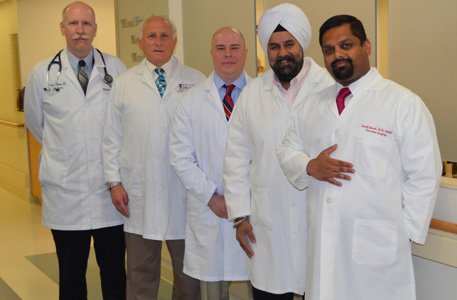BALTIMORE — Nearly 26 million Americans have been diagnosed with diabetes, outpacing cancer, AIDS and heart disease and it affects children and adults in equal numbers.
More than half of all Americans will have diabetes or pre-diabetes by 2020, health officials say. What’s more, according to figures from the Centers for Disease Control and Prevention (CDC) one in three Americans will have the illness by 2050.
November is National Diabetes Month and among the more important need to knows are the treatments available to those with the disease.
The Wound Healing Center, located at the University of Maryland Medical Center Midtown Campus on Linden Avenue in Baltimore, plays a vital role for patients with diabetes.
“Once a person gets diabetes, they often also get neuropathy, a condition in which a person doesn’t feel anything, even if they happen to step on a nail,” said Denise Marino, a spokeswoman for the medical center.
The center provides advanced wound therapies in an outpatient setting. Marino said a multidisciplinary approach makes the center uniquely equipped to heal chronic wounds and non-responsive conditions, often found in diabetic patients.
“The majority of the patients that we see in our center have wounds with large, deep cavities that require complex care, particularly to their legs and feet,” said Barbara Murray, program director of the wound healing center. “To effectively care for these patients, a team approach is needed. Our physician panel includes a wide array of specialties from podiatry to vascular surgery to infectious diseases.”
All of the physicians are specially trained and certified, and they utilize evidence-based and proven therapies based on national best practices models.
The center has four treatment rooms, and two hyperbaric oxygen chambers for therapy that provides oxygen to all parts of the body in amounts greater than possible under normal conditions.
The staff also uses bio-engineered skin substitutes where tissue is designed to temporarily take over the functions of the skin until a patient’s own skin repairs itself or until a skin replacement is possible.
Negative pressure wound therapy, which uses a vacuum dressing to promote healing in acute and chronic wounds, and to enhance healing of burns is also used at the center.
“When a wound develops, it is important to keep it clean and dry. There should be evidence of significant healing within four weeks with development of a scab and or new skin. If the wound has excessive drainage or foul-smelling drainage, redness and pain then it may be infected,” said Dr. Kapil Gopal, MBA, vascular surgeon and assistant professor of surgery at the wound healing center. “Fever and chills are signs of the infection spreading to the body. It is best to seek medical treatment if the wound is enlarging, deep, has no pink tissue at the base or has black covering that is getting bigger.”
Health officials say that the cost of diabetes continues to rise, so prevention and treatment are very important for everyone. The latest research from the American Diabetes Association shows the total cost of diabetes was $245 billion last year, up 41 percent from the $174 billion spent five years prior.
“I know of no other disease that’s increase at about eight percent per year,” said Dr. John Anderson, president of medicine and science for the American Diabetes Association. “That to me isn’t surprising, it’s troubling.”
Diabetes prevalence increases with age, so the aging baby boomer population is attributing to rising costs, according to a report from CNN. The obesity epidemic also plays a role. Being overweight or obese is a risk factor for type 2 diabetes.
Unfortunately, not all risk factors can be controlled, Anderson says. African Americans, American Indians and Asian Americans are all at a greater risk of developing diabetes than Caucasians, leading researchers to believe there is a genetic link.
There is good news, Anderson said. Although diabetes costs are growing, we’re spending the dollars effectively. “We’re picking it up earlier and caring for it better,” he said. “We’re getting the right value for our money.”
For more information about diabetes month and the Wound Healing Center at the University of Maryland Medical Center, visit: www.umm.edu/midtown.
